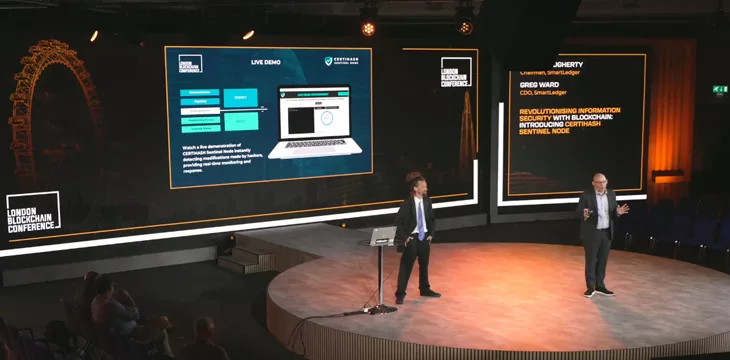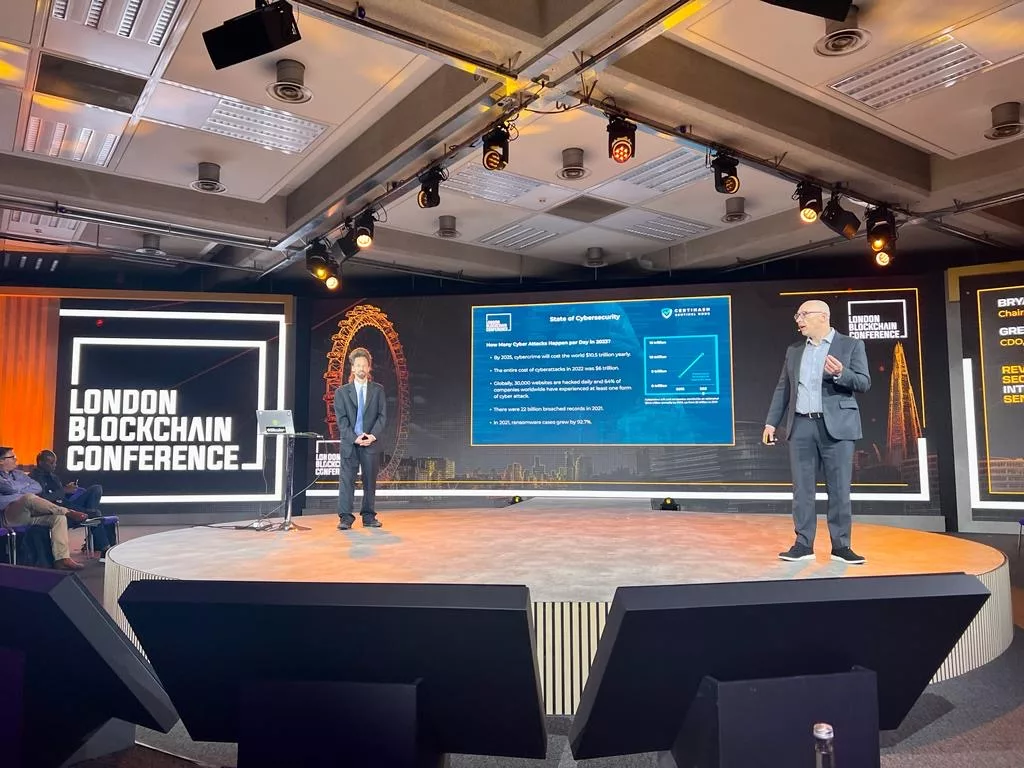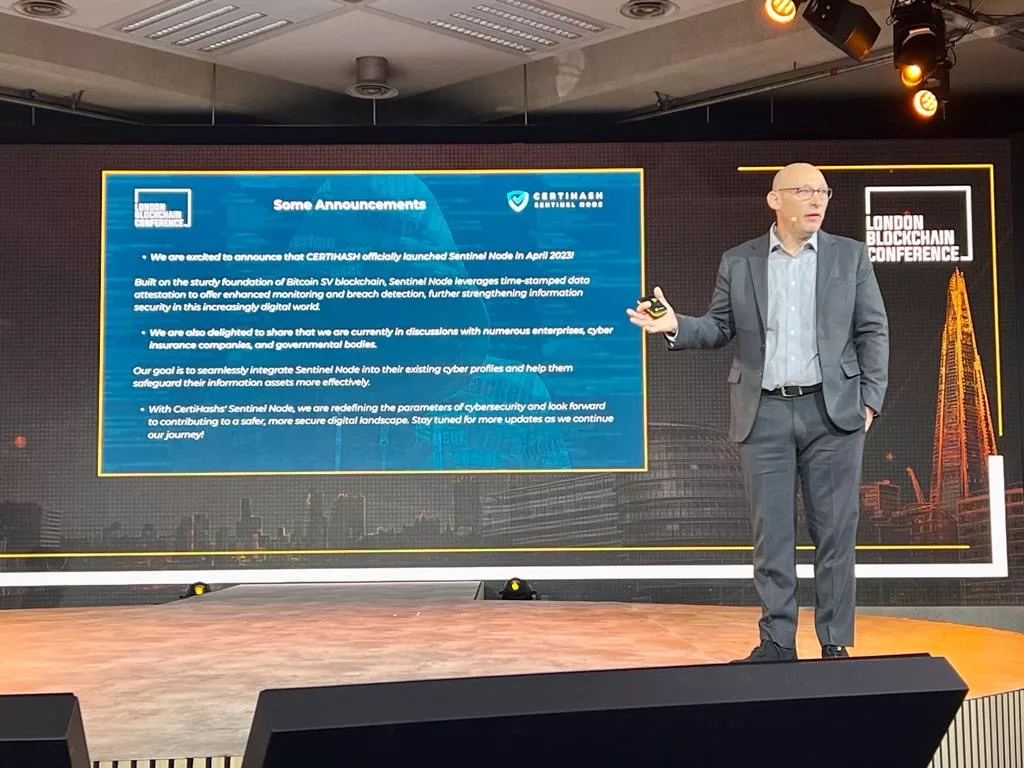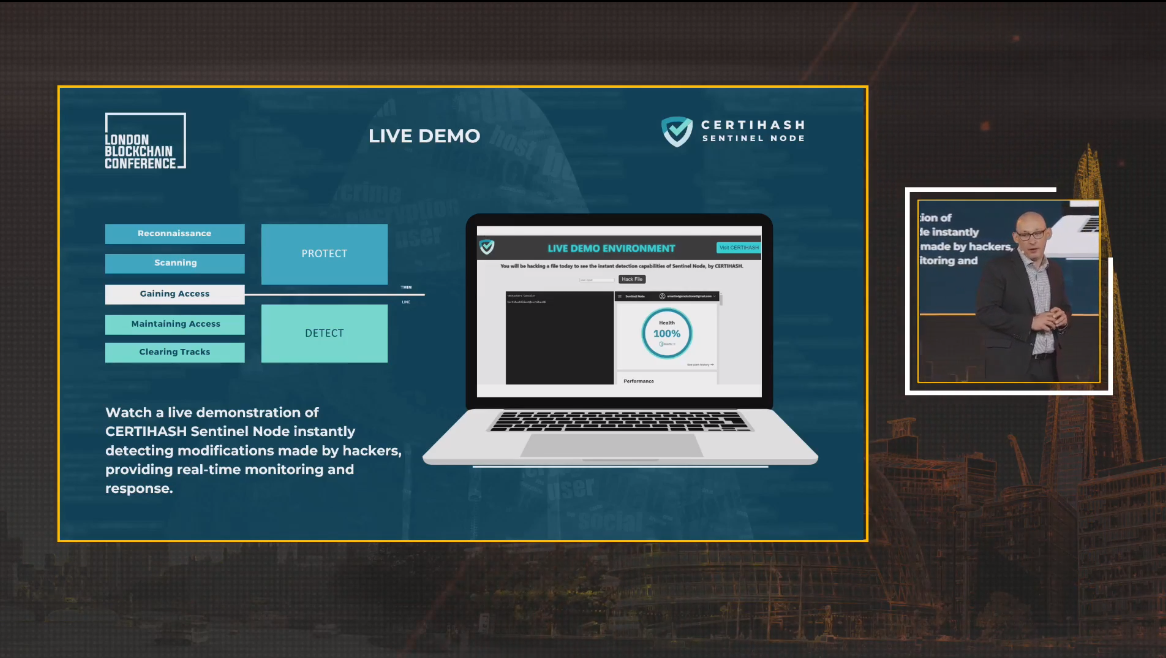
|
Getting your Trinity Audio player ready... |
It’s estimated that by 2025, cybercrime will cost the global economy $10.5 trillion annually. On Day 2 of the London Blockchain Conference, Bryan Daugherty and Greg Ward demonstrated how Sentinel Node by Certihash can significantly improve the state of information security using blockchain technology.

Bryan Daugherty explains the problem and solution
Daugherty opens the session by giving an analogy: imagine it took you 221 days to discover someone had broken into your home and stolen something. What would the chances be of recovering it or catching the perpetrator? Almost zero, right? Yet, that’s the state of cybersecurity today—it takes 221 days on average to detect a system breach.
The internet is broken because we rely on trusted third parties to store our data and detect and resolve security problems. Sentinel Node can fix all that by harnessing the power of the BSV blockchain. Daugherty explains how the currently available systems for detecting network breaches are unaffordable to many small and medium-sized enterprises, but Sentinel Node is changing that.

How does this BSV blockchain-powered cybersecurity tool work? It detects breaches immediately and alerts system administrators by taking a ‘snapshot’ of the state of files, such as who has accessed them and what changes have been made every ten seconds. It requires a massively scalable blockchain with tiny fees to function correctly, and that’s where the BSV blockchain comes in.
Greg Ward gives a live demo of Sentinel Node
Greg Ward then gives a live demonstration of how Sentinel Node works. Unlike many other promised solutions in the blockchain space, this one works today and is already protecting customers. Ward likens it to an 8K camera that watches your room 24/7, detecting who comes in and out and what they do.
Ward shows how Sentinel Node monitors a server in real time, keeping track of three specific files. He then hacks one of these files live on stage, begins a 10-second countdown, and within seconds, Sentinel Node alerts him to the changes.

After the alert, Ward shows how the administrator who receives it has to cryptographically sign off to say he has been alerted and what actions he took to correct the situation. This creates true accountability with no way to pass the buck when something goes wrong. All events are published with a transaction ID on the BSV blockchain, leaving an immutable evidence trail of who did what, when, and how.
Sentinel Node is set to revolutionize information security, and it’s only possible thanks to the infinite scalability of the BSV blockchain with its extremely low fees. Check it out online now!
Certihash: Fortifying cybersecurity through blockchain

 11-22-2024
11-22-2024


